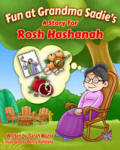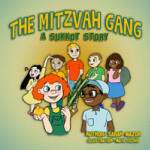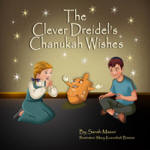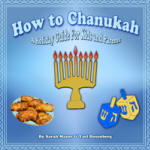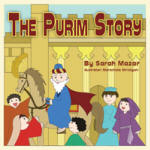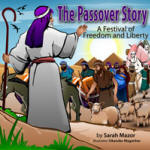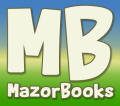|
|
Rosh Hashanah
Shofar Blowing
By: Rivka C. Berman, Contributor
Click Here for More Holiday Articles

The Shofar makes Rosh Hashanah a Blast
The
name Rosh Hashanah does not appear in the Torah. It is recalled only as a time
of blowing the shofar. “Speak to the children of Israel saying: In the seventh
month, on the first day of the month, you shall have a Sabbath, a memorial of
blowing the horn, a holy gathering.” (Leviticus 23:23-24). Thus the Shofar
is the main symbol of the holiday of Rosh Hashanah.
(Please note: By the Torah’s count month one is Nissan, the month of the Exodus,
birth of the Jewish people. Month seven is Tishrei, birthday of the world.)
Shofar Dimensions:
Physical and Spiritual
Shofars can be fashioned from the horns of any kosher animal: rams,
antelopes, gazelles, goats, but not cows. Using a cow horn would be a
blatant reminder of the Golden Calf catastrophe, an imprudent reminder
on Rosh Hashanah’s Day of Judgement. Shofars are fit for use regardless
of whether the animal it came from was ritually slaughtered or not.
Ashkenazi Jews tend to use ram’s horns as shofars. Once an angel halted
the sacrifice of Isaac, Abraham offered a ram on the altar in his stead.
Abraham’s incredible devotion to the word of God is exemplified by the
Binding of Isaac, Akeidat Yitzchak. Using a ram’s horn is thought to
invoke Abraham’s merit and stands as a benchmark for our dedication to
God.
Syrian Jews tend to prefer small, curly shofars. Spanish and Portuguese
Jews blow sleek antelope horns. Moroccan Jews prepare horns for use as a
shofar by altering its natural bends and carefully smoothing the shofar
inside and out.
A bent shofar symbolizes humility, a necessary attribute of the
penitent. The hollowed shofar represent the goal of minimizing one’s ego
to make room for holiness, symbolized by the air that rushes through the
horn.
According to Jewish law, a shofar cannot be smaller than a tefach,
roughly four inches. A tefach is commonly thought of as a handbreadth,
which could be the rationale behind this halacha, (law). The
congregation would not be able to see a shofar smaller than a
handbreadth because it would be completely covered by the hands of the
shofar blower.
Why Blow a Shofar?
Shofars have played an important role throughout Jewish history. They
announced jubilee and sabbatical years, and heralded the beginning of a
new Jewish month. Once blown to gather the people for battle, the shofar
can be thought to signal the beginning of an inner battle, where good
challenges the dark motives within us all.
Rousing and unusual, the sound of the shofar bounces off the ears and
lodges somewhere in the heart. Described as the air raid siren for the
soul, the alarm clock for the blasé, the shofar is supposed to rouse
those who hear it to a higher purpose.
Maimonides heard this message in the shofar’s notes: “Wake up you
sleepers from your sleep and you slumberers from your slumber. Search
your deeds and return in penitence.”
Top Ten Reasons for
Blowing the Shofar
Saadia Gaon (882-942 C.E.) spelled out ten reasons for shofar blowing on
Rosh Hashanah that are based upon the times the shofar has been blown
throughout Jewish history.
1. Rosh Hashanah is the anniversary of the creation of humankind or the
world’s birthday. The presence of Adam and Eve gave God subjects who
could then look God as Sovereign, and a shofar is blown as a symbol of
God’s coronation. A reigning God is an image evoked frequently in the
Rosh Hashanah liturgy. There are many reasons for this symbolism (see
God as King section), and one of the main reasons is because life and
death decisions are ultimately in God’s hands.
2. Like a starting gun at the beginning of a race, the shofar blast
marks the beginning of the Ten Days of Repentance from Rosh Hashanah (1
Tishrei) to Yom Kippur (10 Tishrei).
3. At Mt. Sinai a shofar sound was heard: “And then the voice of the
shofar sounded louder and louder” (Exodus 19:19). On Rosh Hashanah we
renew our allegiance to the Torah as guide to a good and meaningful
life.
4. Prophets used the shofar to call the people together to repent.
Hearing the shofar in the synagogue should have the same effect on us.
5. The mournful sound is a cry of mourning for the Temple that once
stood in Jerusalem. Long ago, the entire Jewish nation would gather at
the sound of the shofar. Now the Jewish people are scattered and
divided. Hearing the shofar in this context reminds listeners to work
and pray for Redemption and unity.
6. Abraham followed God’s orders and was prepared to sacrifice his
beloved son Isaac, but thanks to heavenly last-minute intervention, he
offered a ram instead. Shofars are horns from rams or similar animals
and are meant to recall this episode.
What the “Binding of Isaac” is supposed to mean to us is subject to a
wide, conflicting variety of interpretations. Abraham’s absolute faith
can be seen as an incredibly worthy quality. He was willing to sacrifice
the son he waited for, for so long, just because God said so. The
magnitude of his faith is even greater when Abraham’s kind nature is
weighed against the brutality of the act he was asked to do. Abraham’s
pure faith is to inspire greatness within his descendants.
From another viewpoint, God was trying to teach Abraham not to act
without thinking. Not to lose his personal judgement even before God.
Abraham blindly followed God’s word, even though this meant
contradicting the kindness that was Abraham’s hallmark. God wanted
Abraham to seize responsibility for his own deeds, to deeply internalize
morality until it could not be shaken, even by Divine command.
7. “Shall a shofar be sounded in the city and the people not be afraid?”
(Amos 2:6) In direct translations of the Hebrew, yirah, the emotion that
the shofar is supposed to create, is translated as fear. But it should
not be confused with fear of the dark or the boogieman under the bed; a
better translation would be “awe.” A shofar sound, the powerful throaty
blast from a horn brings about a feeling of awe, lofty majesty. Mere
mortals stand humbled before this representation of God’s might.
8. When the Messianic era will dawn a shofar blast will announce the
good news. Messianic era and Jews? Isn’t that part of another religion?
Nope. Classic Jewish texts and prayers are laden with references and
hopes for this time when all will recognize God, the Holy Temple
rebuilt, etc. etc. You’re not alone if the Messianic talk makes your
feel uncomfortable. This idea of awaiting the Messiah was written out of
Judaism in the Reform movement’s Declaration of Principles at its
groundbreaking 1885 Pittsburgh Conference. “We consider ourselves no
longer a nation, but a religious community, and therefore expect neither
a return to Palestine, nor a sacrificial worship under the sons of
Aaron, nor the restoration of any of the laws concerning the Jewish
state.” Thus some have parlayed Saadia Gaon’s eighth reason as a general
exhortation to ready ourselves Rosh Hashanah’s Day of Judgment.
9. The Jewish idea of the Messiah or in a better transliteration of the
Hebrew, Moshiach, includes a phase for the ingathering of Jews from all
over the world to Israel. This phase will be announced by another
sounding of the shofar. Given the hurtful divisions between Jews,
between people of all races and religions, the shofar’s sound can
motivate prayer for the understanding that leads to unity.
10. Phase three of Moshiach will feature the resurrection of the dead.
Once again a shofar will be blown to announce this miraculous event.
Even before this era arrives, this aspect of the shofar can remind us
that life and death are in God’s “Hands.”
The Shofar Service
Rosh Hashanah’s first section of morning prayers, shacharit, passes
without the shofar being blown at all. The shofar action begins with
musaf, the special additional prayer service added on Shabbat and other
holidays. When the Jewish people were under Roman rule the shofar
service was shifted to musaf. Apparently the Romans did not approve of
this religious observance and sent guards around to sniff out religious
Jewish activity, especially on Rosh Hashanah mornings, when the shofar
blasts would be a dead giveaway. By the time the shofar was blown at
musaf the guards would have gone away.
(This was a common tactic of the rabbis during this time period.
Recitation of the important Shema prayer was also moved to the musaf
service. Though the Shema has been returned to shacharit, its first
verse is still recited at musaf during the repetition of the Amida
prayer.)
Shabbat’s prohibitions take precedence over Rosh Hashanah’s customs.
Rabbis feared that blowing a shofar on Shabbat would lead to the
transgression of other Shabbat no-no’s like carrying in the public
domain. Thus the shofar is not blown during Rosh Hashanah services on
Saturday mornings.
How many times is the
Shofar blown?
There is no one answer to this question. Ashkenazic and Sephardic
practices differ.
Ashkenazim, Jews of Eastern European decent, traditionally blow 100
shofar sounds. This tradition has its roots in a halachic question.
Bearing in mind that hearing nine shofar blasts fulfills the shofar
requirement, the rabbis wondered: What is the authentic shofar sound? Is
it a tekiah, one long blast? shevarim, three medium-length blasts? or
teruah, nine or ten short blasts? Or should a shevarim and teruah be
blown together. Since the true answer isn’t known, sets of each sound
are blown, each one bracketed by a tekiah, for a total of 100.
Others base the 100-sound quota on a midrash. Sisera, an Assyrian
general who was set to attack the Jewish people, was killed by Yael. (Sisera
fled the battlefield to Yael’s tent. She fed him salty cheese, which he
washed down with wine and fell asleep from the alcohol. Yael seized the
moment, seized a tent stake and drove it through the general’s head.)
Sisera’s mother cried 101 tears of anger at the Jewish people. One
hundred sounds of the shofar counteract the anger that is thought still
powerful enough to sway God’s judgment. Sisera’s mom’s one pure tear of
love for her fallen son cannot, even with the longest tekiah notes, be
undone.
Sephardic Jews have several different customs. Some congregations will
blow 101 notes from the shofar based on numerology. The name of the most
harmful angel is based on the letter samech, numerical value 60, and mem,
numerical value 40. On the other hand, 101 is the total of arch good
angel Micha-el’s name (mem=40, Yud=10, Chaf=20, Aleph=1, Lamed=30)
Yemenite Jews blow 41 blasts.
The Blessings
Shofar service preparations begin with the recitation of Psalm 47. Some
congregations read this psalm seven times. The psalm ties the two main
themes Rosh Hashanah, shofar and God’s coronation, together in a few
short verses.
“All nations should clap their hands and shout to God with a voice of
joy because God is the highest, most mighty Sovereign over the land. God
ascends with the teruah with the voice of the shofar…” (Psalm 47)
Following the psalm, some congregations recite a six-line acrostic
prayer that spells out “May the evil forces be torn.” This poem contains
a rather well known line from psalms: “From the narrow places I have
called you, respond to me from Your expansiveness.” Contemporary
Chabad-Lubavitch scholar Rabbi Simon Jacobson wrote this verse is an
axiom of God’s response to prayer. Cries that come from being cornered
by pain and difficulty are answered generously by God. Shofars have a
shape that mirrors this equation. On one end the horn is narrow, like
the cry to God that is limited by circumstance and lack of
understanding. At the other end the horn is wide, God responds to prayer
with vast generosity, giving us more than we could ask for. (In other
writings Rabbi Jacobson notes that this does not mean that God gives us
what we want, but God gives us what ultimately is right for us.)
"Baruch ata Adonai Eh-lo-hei-nu meh-lekh
ha-o-lam ah-share kid-e-sha-nu
b-mits-vo-tav ve-tzi-va-nu leash-moe-ah kol shofar"
"Blessed are you, Ruler of the Universe, who has sanctified us with
commandments and who has commanded us to hear the voice of the shofar.”
“Ba-ruch a-ta Adonai, Eh-lo-hei-nu meh-lech ha-o-lam
sheh-heh-cheh-ya-nu v'ki-y'manu v'higi-anu la-zman ha-zeh.”
We praise You, Eternal God, Sovereign of the Universe, for giving us
life, for sustaining us, and for enabling us to reach this season.
Sounds of
the Shofar
Anyone who hears the shofar being blown knows the sounds are not
random, nor are familiar pop tunes played from the ritual horns. The
four types of sounds traditionally blown from the shofar have many
interpretations making them a sort of spiritual Morse Code.
Shofar Sounds:
Tekiah – One long blast
Shevraim – Three medium blasts
Teruah – Nine or ten short staccato sounds
Tekiah Gedolah – One extra long note
The ba’al tokeah who blows the shofar
generally attempts to give equal time to the tekiah, shevarim, and
teruah. Ideally a three-second tekiah will have a three-second shevarim
and three-second teruah blown in turn. In practice the ideal is hard to
come by. The ba’al tokeah’s lung capacity and shofar blowing skill are
better determiners of whether this ideal will find its way into a
synagogue near you.
Shofar Notes: The Soul
Awakens
The tekiah, long and uninterrupted, represents complacency with the
status quo. I’m a good Jew. I’m a good person. Shevarim, literally
translates to mean “broken,” is the sound of the first glance within the
self, an awakening, the heartbroken feeling that comes with unflinching
self-evaluation. Lastly, the teruah and its nine or ten short blasts of
truth parses these deficiencies into easy-to-swallow pieces to bring
about repentance and growth. Bit by bit. A closing tekiah symbolizes the
birth of a new and better self.
Shofar Notes: Looking Outward
Rabbi Donald Rossoff of Temple Bnei Or, a Reform synagogue in
Morristown, N.J., explains the shofar sounds with a different twist.
Tekiah was the sound used for nationally meaningful occasions. Tekiot
heralded holidays and new months and called the nation to ready for
battle. Today the tekiah commands action and courage. Shevarim, a note
broken into three, continues the tekiah’s message. It is a call to look
beyond self-absorption to see the pain of a shattered world. This brings
the shofar listener to the third sound, teruah. When the Israelites in
the desert head the sharp short teruah notes they knew to break camp and
prepare to move onward toward the Promised Land. Today a teruah directs
listeners to shake up the behaviors and habits that constitute the
status quo.
Rabbi Rossoff sums up the three shofars sounds: “Tekiah – Hear the call
of the community. Shevarim – Harken to the pain of the world. Teruah –
move in a direction of meaning and knowledge.”
Shofar Sounds: A Symphony of Divine Coronation
Tekiah is a long and commanding blast. To some commentators’ ears
the tekiah rang forth with the regal pageantry of a royal coronation.
Time and again in the Rosh Hashanah liturgy God’s sovereignty is
reaffirmed. To citizens of modern democracies Kings and Queens are
figureheads and tabloid fodder more than rules, so the God-as-Sovereign
notion is foreign and antiquated.
Maimonides, a philosopher, scholar, and royal physician in the Dark
Ages, authored a classic work on Jewish law the Mishna Torah wherein he
fished out legal decisions from the endless back and forth of Talmudic
arguments. In his “Laws of Jewish Kings” section, Maimonides wrote a law
that can help clarify what God as Sovereign can mean in modernity. “A
Jewish king’s decrees and laws are only for the good of the people.”
Now plug God into that quote from Maimonides. “God’s decrees and laws
are only for the good of the people.”
This is a very nice sentiment to be sure, but when jobs are lost, when
babies get sick, when wise grandparents are felled by strokes, when life
gets in the way it’s hard to wrap the heart around this understanding of
God.
Shevarim, the broken notes! No wonder the shofar wails. Life gets in the
way between accepting God as awesome King/Queen, beloved Mother/Father
of all. The gap is so wide between the here and now and the ought to be.
The heart cries, the soul sobs. Rosh Hashanah. The day has come to
envision a bridge between today’s limitations and the love of God that
lies beneath the turmoil.
This isn’t an easy feat. Wake up! Teruah, a nine-beat alarm clock bleat.
There’s a comforting tradition that those who are aware of their own
shortcoming are spared reminder jolts form God.
Tekiah. Smooth and long. Unwavering love from God. It’s always there but
can we hear it? Do we listen for it?

Mazor Guide to Rosh Hashanah brings you much more about the holiday, its
meaning and its traditions... See the links below.
.jpg)
Buy Kosher Wines for Rosh Hashanah!!
Articles
|
|






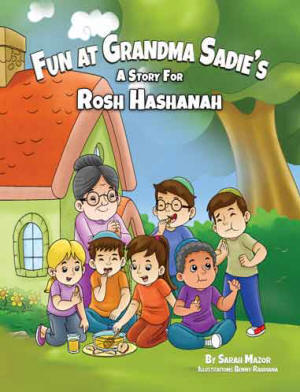

.jpg)
